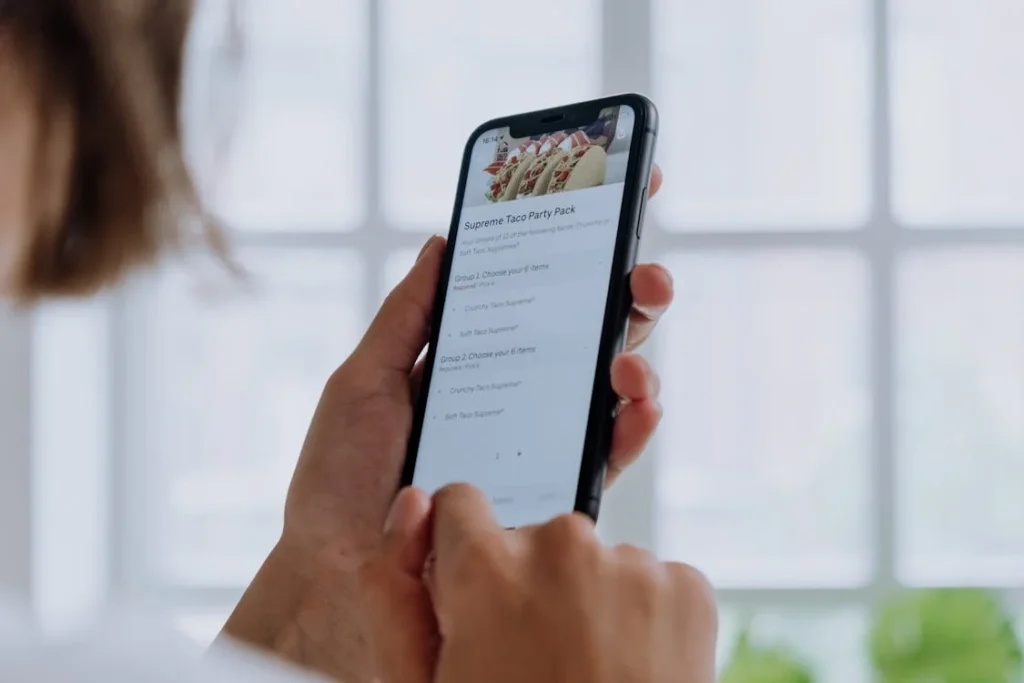Smartphones are more than just devices—they are lifelines. For people with disabilities, the right smartphone and apps can open up a world of independence, communication, and accessibility. Whether it’s voice commands for hands-free control, screen readers for the visually impaired, or AI-powered assistants for cognitive support, technology is making everyday tasks easier and more inclusive.
Manufacturers and app developers are now designing features that cater to different needs, ensuring that everyone, regardless of ability, can use a smartphone with ease. From Apple’s VoiceOver to Android’s TalkBack, accessibility is no longer an afterthought—it’s a priority.
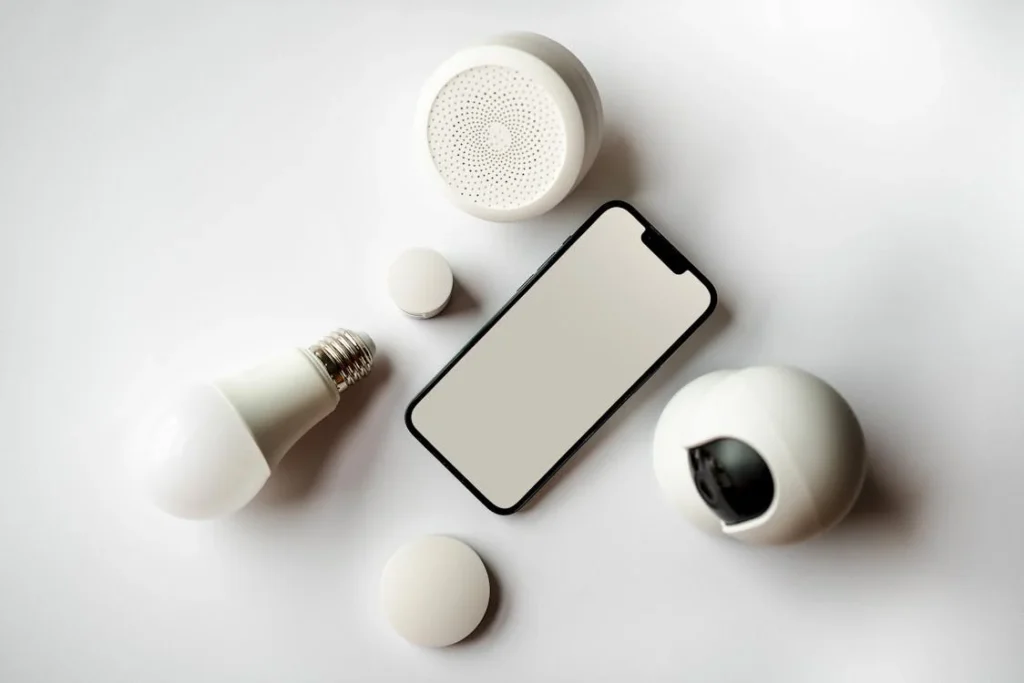
Choosing the Right Smartphone for Accessibility
A good smartphone should not only be powerful but also easy to use for everyone, regardless of their abilities. Some brands have taken major steps in designing devices with built-in accessibility features, ensuring that people with different disabilities can use them comfortably.
Apple’s Commitment to Accessibility
Apple has been a leader in making smartphones accessible. The iPhone is designed with built-in tools that support users with visual, hearing, motor, and cognitive disabilities.
VoiceOver, Apple’s screen reader, helps visually impaired users navigate their devices by reading out text and describing on-screen elements. The feature is highly intuitive and supports braille displays, making it one of the most advanced accessibility tools available.
For those with limited mobility, Apple’s AssistiveTouch allows users to control their device using gestures instead of pressing buttons. It enables shortcuts for tasks like taking screenshots or accessing Siri without needing physical effort.
People with hearing impairments benefit from Live Listen, which turns an iPhone into a remote microphone that enhances sound from a nearby speaker or conversation partner.
Android’s Accessibility Features
Android devices also offer excellent accessibility features. Google’s TalkBack is a screen reader similar to VoiceOver, allowing visually impaired users to hear descriptions of on-screen elements.
It provides haptic feedback and spoken cues to guide navigation. The high level of customization available in Android devices ensures that users can modify fonts, contrast levels, and display sizes to suit their needs.
Voice Access is another powerful tool that allows people with limited mobility to control their entire phone using voice commands. This feature makes it possible to open apps, type messages, and browse the web hands-free.
Live Caption is a breakthrough feature for people who are deaf or hard of hearing, as it provides real-time captions for videos, podcasts, and even phone calls.
The Rise of Smart Assistants
Both iPhones and Android devices come with AI-powered assistants that enhance accessibility. Siri, Google Assistant, and Samsung’s Bixby allow users to send messages, make calls, and search the internet using voice commands.
This hands-free control makes smartphones easier to use for individuals with physical disabilities or those who find typing difficult.
Smart assistants are also helping users set reminders, manage daily schedules, and even control smart home devices. Someone with mobility challenges can simply ask their phone to turn off the lights, adjust the thermostat, or unlock the door without needing to move.
Choosing Between iPhone and Android
The choice between iPhone and Android depends on personal preferences and specific accessibility needs. iPhones are known for their seamless integration of accessibility features, with updates that ensure ongoing improvements.
They offer a highly user-friendly experience but can be more expensive.
Android devices, on the other hand, provide more variety in terms of price and customization. Some brands like Samsung and Google Pixel offer enhanced accessibility tools that rival Apple’s, while others provide basic features at a more affordable cost.
Regardless of the brand, smartphones today are designed to be inclusive. With the right settings and accessibility features enabled, these devices are transforming how people with disabilities interact with technology and the world around them.
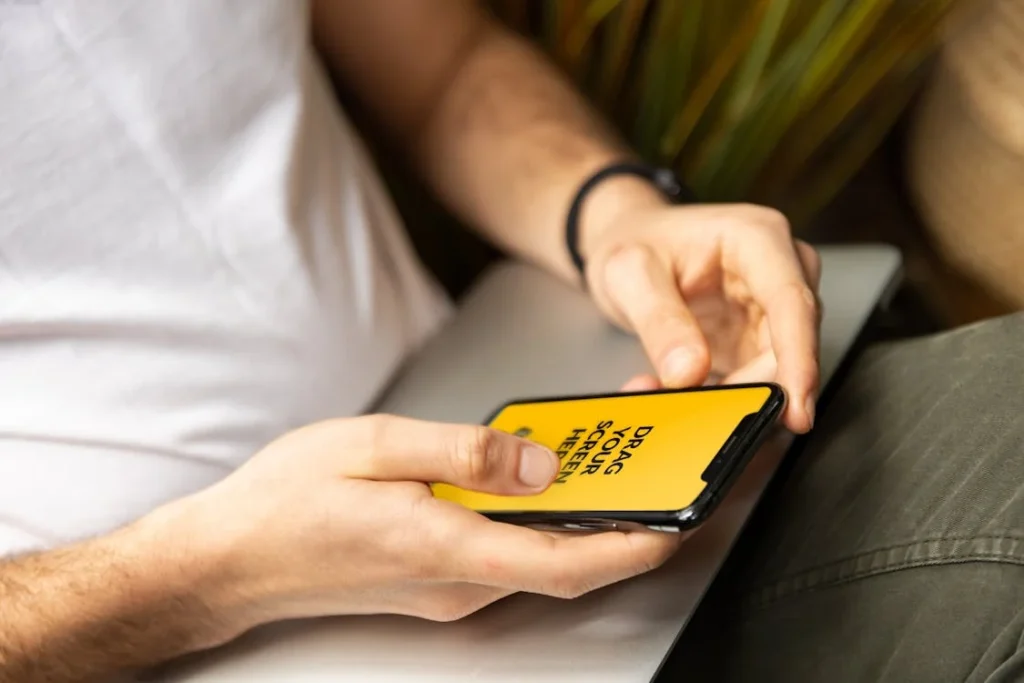
The Best Apps for Accessibility
Smartphones become truly powerful when paired with the right apps. For people with disabilities, apps can provide solutions for communication, mobility, learning, and daily tasks.
From screen readers to AI-powered assistants, these apps are helping users navigate life with more independence and ease.
Apps for Visual Impairments
For individuals who are blind or have low vision, screen reader apps and object recognition tools are essential. One of the most advanced apps in this category is Seeing AI, developed by Microsoft.
This AI-powered app uses the phone’s camera to describe people, objects, and text aloud. It can read books, identify currency, and even recognize emotions in a person’s face.
Be My Eyes is another life-changing app that connects visually impaired users with sighted volunteers who provide assistance via video calls.
Whether it’s reading labels, identifying colors, or checking expiration dates, this app allows users to receive real-time help from a global network of volunteers.
Google’s Lookout offers a similar experience but uses AI instead of human volunteers. It scans the environment and provides spoken feedback about nearby objects, documents, and even food labels. It helps users navigate their surroundings with greater confidence.
Apps for Hearing Impairments
For people who are deaf or hard of hearing, real-time transcription and captioning apps are essential. Live Transcribe, developed by Google, provides instant speech-to-text transcription, making conversations more accessible.
Whether it’s a meeting, a classroom discussion, or a casual conversation, the app ensures that no information is missed.
Ava is another innovative app that creates real-time captions for group conversations. It allows users to follow discussions by displaying text in different colors for each speaker. This is particularly useful in social settings or business meetings where multiple people are talking.
For phone calls, Rogervoice provides real-time captions, allowing users to read the conversation as it happens. It supports multiple languages and works with both personal and professional calls, ensuring that communication is never a barrier.
Apps for Mobility Challenges
People with limited mobility rely on apps that provide hands-free control and voice commands. Voice Access, an Android app, allows users to operate their phone entirely through voice commands.
From opening apps to scrolling through web pages, this app gives users complete control without needing to touch the screen.
Switch Access is another essential tool for Android users with mobility impairments. It enables users to interact with their phone using external switches, keyboards, or facial gestures. This ensures that even those with severe physical disabilities can navigate their device effortlessly.
For wheelchair users, Wheelmap is a valuable app that helps identify wheelchair-accessible locations. It provides user-generated ratings of restaurants, stores, and public spaces, making it easier to find accessible places when traveling or exploring new areas.
Apps for Cognitive Disabilities
People with cognitive disabilities, such as autism or ADHD, benefit from apps that assist with organization, communication, and focus. Proloquo2Go is one of the most popular apps for individuals with speech and language challenges.
It uses a visual-based communication system that allows users to express themselves using images, text, and voice synthesis.
Brain in Hand is an app designed for individuals with autism and anxiety-related conditions. It offers step-by-step guidance, reminders, and emergency support to help users manage daily tasks and social interactions.
The app provides structure and reassurance, reducing stress and improving independence.
For individuals with ADHD, apps like Todoist and Time Timer help with organization and time management. These apps break down tasks into manageable steps, send reminders, and provide visual countdowns to help users stay on track.
Apps for Navigation and Independence
Navigating public spaces can be challenging for people with disabilities, but GPS and AI-powered apps are making mobility easier. Google Maps offers detailed accessibility information, such as step-free routes, wheelchair-accessible entrances, and real-time transit updates.
Users can check whether a train station has an elevator or if a restaurant is wheelchair-friendly before visiting.
Aira is another revolutionary navigation app designed for visually impaired users. It connects users with trained agents who provide real-time assistance through a live video feed.
Whether it’s navigating a busy street, reading a sign, or finding a specific location, Aira ensures that users can move confidently in any environment.
For pedestrians with disabilities, Soundscape by Microsoft uses 3D audio cues to provide spatial awareness. The app describes nearby streets, landmarks, and intersections, helping visually impaired users explore their surroundings safely and independently.
These apps are transforming the way people with disabilities interact with their environment.
By using AI, voice recognition, and real-time support, smartphones are no longer just communication tools—they are powerful accessibility devices that promote independence, confidence, and inclusion.
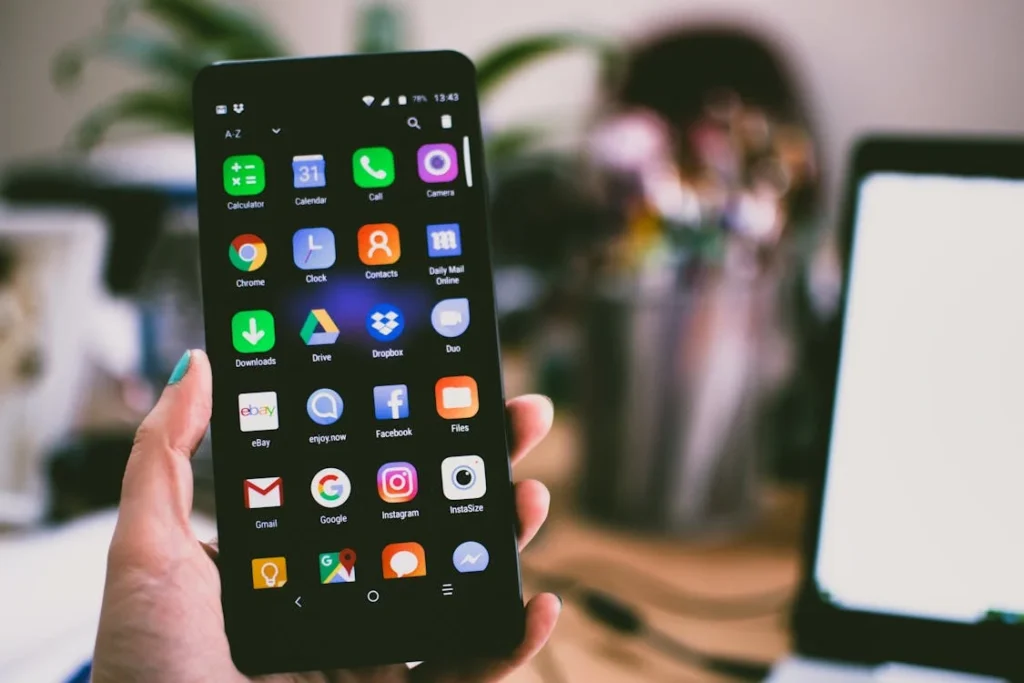
Smart Home Integration for Greater Accessibility
Beyond communication and navigation, smartphones are now central to smart home technology. For people with disabilities, smart home devices controlled through apps can significantly enhance daily living by providing hands-free control over essential household functions.
Voice-Controlled Assistants
AI-powered voice assistants like Amazon Alexa, Google Assistant, and Apple’s Siri are transforming home accessibility. These voice-controlled systems allow users to operate lights, appliances, doors, and entertainment devices without needing to move.
A simple command like “Alexa, turn on the lights” or “Hey Google, lock the door” makes independent living much easier for individuals with mobility impairments.
For people with limited hand function, smart home assistants help with everyday tasks like setting reminders, making phone calls, and even controlling smart thermostats.
This means adjusting the room temperature, checking the weather, or managing to-do lists without needing to touch a screen or press buttons.
Smart Security and Home Automation
Home security can be a challenge for individuals with disabilities, but smart locks and security systems provide an added layer of independence and safety.
Smartphone-controlled smart locks allow users to unlock doors remotely, eliminating the need to use physical keys. This is especially useful for wheelchair users or individuals with arthritis who may struggle with traditional locks.
Video doorbells such as Ring and Google Nest provide real-time video and audio feeds, allowing users to see and communicate with visitors from their smartphones.
This ensures that individuals with mobility impairments or hearing difficulties can monitor their homes without needing to move to the door.
Automated lighting systems also play a crucial role in accessibility. Smart light bulbs and motion-activated lights can be controlled via apps or voice commands, ensuring that users never have to fumble for a light switch.
For visually impaired individuals, smart lighting systems that adjust brightness automatically based on the time of day can provide better visibility and reduce the risk of falls.
Smart Health Monitoring
Smartphones are now being integrated with health-monitoring devices that track vital signs, medication schedules, and emergency alerts.
Wearable health trackers like Apple Watch and Fitbit sync with smartphones to monitor heart rate, oxygen levels, and sleep patterns, providing valuable health insights.
For individuals with chronic illnesses or disabilities, medication reminder apps send alerts when it’s time to take medicine. Some smart pill dispensers even connect to smartphones and notify caregivers if a dose is missed, ensuring that health management remains consistent.
Fall detection technology is also becoming a game-changer for individuals at risk of falls. The Apple Watch, for example, detects sudden falls and automatically sends an alert to emergency contacts if the user does not respond within a few seconds.
This feature provides peace of mind for both users and their families, knowing that help is always within reach.
AI-Powered Home Assistance
Artificial intelligence is making smart homes even more intuitive by learning user preferences and adjusting settings accordingly. AI-powered assistants can recognize routines, suggesting the best times to adjust lighting, lock doors, or play relaxing music based on daily habits.
For individuals with speech impairments, AI is making voice commands more adaptive. Some smart assistants can now learn and recognize different speech patterns, ensuring that voice-controlled technology remains accessible to users with speech difficulties.
By integrating smartphones with smart home technology, people with disabilities can experience greater independence and convenience.
These innovations are removing physical barriers and making everyday living more manageable, empowering individuals to take full control of their environment.
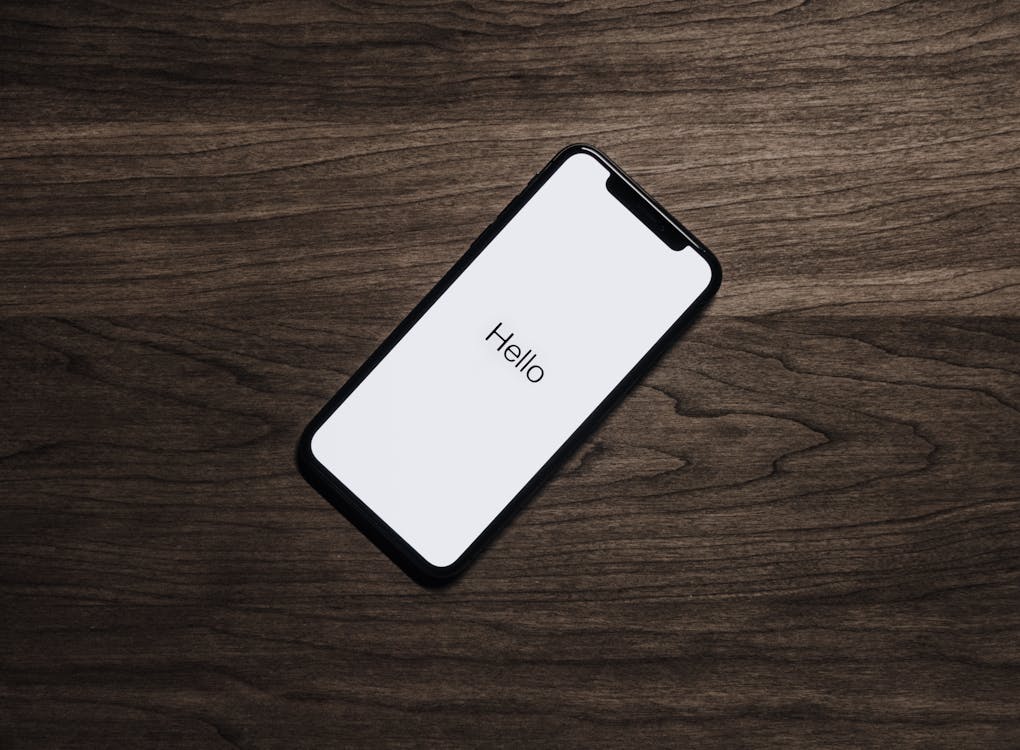
The Future of Smartphones and Accessibility
Smartphones have already made life more accessible for people with disabilities, but the future promises even more breakthroughs.
Advances in artificial intelligence, augmented reality, and wearable technology are shaping a world where accessibility is seamless and personalized. As technology continues to evolve, smartphones will become even smarter, adapting to the unique needs of each user.
AI-Powered Personal Assistants
Artificial intelligence is becoming more sophisticated, allowing smartphones to function as personalized accessibility assistants. Future AI-driven apps will be able to predict user needs before they are even spoken.
For example, a smartphone might detect patterns in movement and suggest transportation options before a person with mobility challenges even asks for them.
AI will also be able to process a user’s voice over time, improving speech recognition for individuals with conditions that affect their speaking ability.
Google and Apple are already developing AI assistants that use machine learning to create personalized accessibility experiences. These assistants will be able to adjust smartphone settings automatically based on the user’s behavior.
If someone with low vision regularly enlarges text, their phone could automatically apply that setting to every app they use.
AI will also enhance real-time translation, making communication easier for people who are deaf or hard of hearing by providing instant captions for any spoken language.
Augmented Reality for Navigation
Augmented reality (AR) is changing how people with disabilities navigate the world. Smartphone cameras and AR technology are being used to provide real-time guidance in public spaces.
Apps like Google Lens are already helping visually impaired users recognize objects, read text, and describe their surroundings.
In the future, AR glasses connected to smartphones may provide even more independence by offering step-by-step navigation through voice or haptic feedback.
Cities are starting to integrate AR-based navigation into their accessibility plans. Users will soon be able to point their smartphones at buildings, crosswalks, or signs, and receive spoken instructions tailored to their needs.
This could make commuting, shopping, and traveling significantly easier for people with disabilities.
Wearable Accessibility Technology
Smartphones are becoming more connected with wearable devices designed specifically for people with disabilities.
Smart glasses with AI-powered image recognition can describe objects in a user’s environment, helping those with low vision interact more confidently with the world around them.
These glasses could soon integrate with smartphones to provide real-time facial recognition, helping users identify friends and family members instantly.
For individuals with mobility challenges, wearable brain-computer interface technology is also advancing. Researchers are developing headsets that allow users to control their smartphones using only their thoughts.
This could revolutionize accessibility for people with paralysis or other conditions that limit physical movement, giving them full control over their devices without needing to touch a screen.
Smarter Accessibility Apps
Future accessibility apps will continue to evolve, incorporating AI-driven recommendations and deeper smartphone integration.
Apps that provide real-time object detection, voice-controlled smart home management, and AI-powered language interpretation will become more intuitive and widespread.
Companies like Apple, Google, and Microsoft are investing heavily in accessibility research, ensuring that their next generation of products is even more inclusive.
Voice assistants will also become more conversational, allowing users to have more natural interactions with their devices.
Instead of simple commands, users will be able to describe what they need in everyday language, and AI will interpret and execute tasks accordingly. This will make smartphones more user-friendly for individuals with cognitive or speech-related disabilities.
A More Inclusive Digital World
The future of smartphones is not just about hardware and software—it’s about creating a more inclusive digital world.
As governments and tech companies work together to improve accessibility, we can expect to see global standards that ensure all devices and apps are designed with inclusivity in mind.
With AI, AR, and wearable technology advancing rapidly, the next decade will bring innovations that empower people with disabilities in ways we have yet to imagine.
Smartphones are no longer just tools for communication; they are becoming personal assistants, mobility aids, and accessibility hubs that improve everyday life.
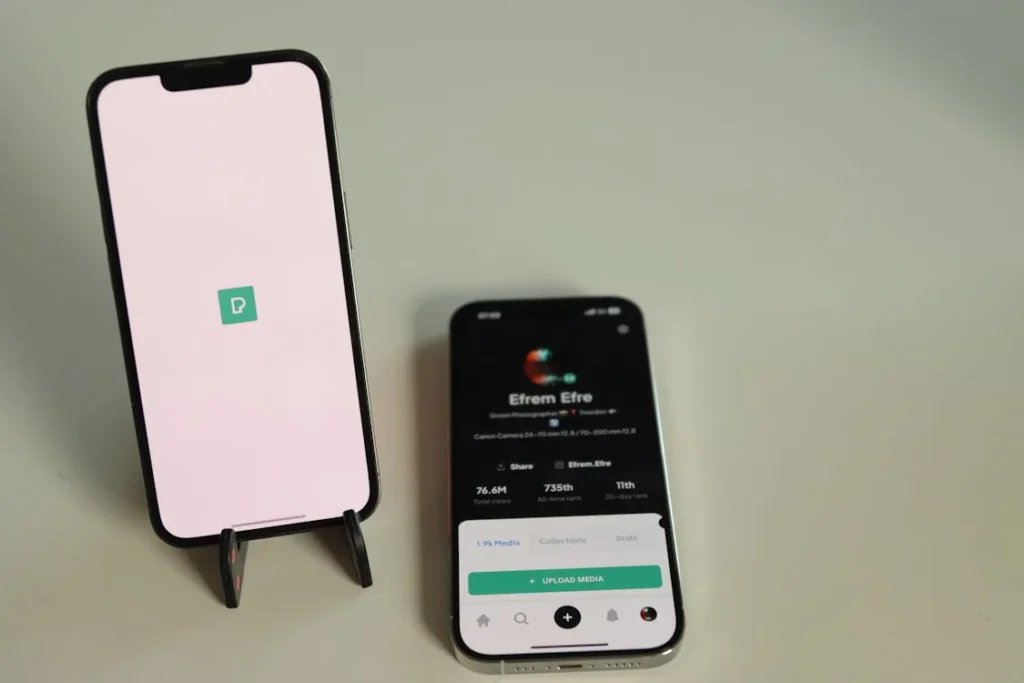
How to Customize a Smartphone for Maximum Accessibility
The best smartphone is one that adapts to the user’s needs. While manufacturers provide built-in accessibility features, customizing these settings can make a phone even more user-friendly.
People with different disabilities can modify their device to improve usability, whether through voice controls, screen adjustments, or specialized input methods.
Adjusting Display and Text Settings
For individuals with low vision or reading difficulties, increasing text size and contrast can make a smartphone much easier to use.
Both iPhones and Android devices allow users to enlarge text, adjust brightness, and enable high-contrast modes. Some users may prefer inverted colors or grayscale settings to reduce eye strain.
Apple’s Magnifier tool turns the camera into a digital magnifying glass, helping users read small text or see objects in greater detail. Similarly, Android’s Magnification feature allows users to zoom in on any part of the screen with a simple gesture.
For those with dyslexia, fonts like OpenDyslexic, which are designed to reduce letter confusion, can be installed to improve readability. Some smartphones also have built-in reading tools that highlight words as they are read aloud, making it easier for users to follow along.
Enhancing Touch and Interaction Controls
People with mobility impairments may struggle with touch gestures, but smartphones offer alternative ways to interact with the screen.
AssistiveTouch on iPhones and Interaction Controls on Android allow users to customize their device with on-screen buttons and gesture shortcuts.
These settings help users perform common tasks like taking screenshots or returning to the home screen without needing precise finger movements.
For those who have difficulty tapping small icons, smartphones can be set to recognize larger touch areas. Some devices also offer custom touch gestures, allowing users to assign actions to specific swipes or taps.
Switch Control on iPhones and Switch Access on Android provide external device support for users with severe mobility limitations.
These features allow smartphones to be controlled using adaptive switches, head movements, or even eye-tracking technology, making it possible to use a device without physically touching the screen.
Hands-Free Control for Independence
For users who cannot use touchscreens at all, voice control is a game-changer. iPhones feature Voice Control, which lets users navigate their device entirely through spoken commands.
Android’s Voice Access provides a similar hands-free experience, allowing users to open apps, dictate messages, and browse the web using only their voice.
Voice assistants like Siri, Google Assistant, and Bixby enhance accessibility by enabling users to set reminders, call contacts, or even control smart home devices without needing to press a button.
These assistants continue to improve with AI advancements, making them more responsive and capable of understanding different speech patterns.
Eye-tracking technology is also becoming more integrated into smartphones. Some Android devices support gaze-based navigation, allowing users to move between screens simply by looking at different parts of the display.
As this technology advances, it could offer even more freedom for individuals with severe mobility impairments.
Customizing Hearing Accessibility
People with hearing impairments can enhance their smartphone experience by enabling sound amplification, real-time transcription, and customized audio settings.
Many modern smartphones include hearing aid compatibility, allowing users to connect their devices wirelessly for clearer calls and media playback.
Live Caption on Android and Apple’s Live Transcribe offer real-time subtitles for spoken content, including phone calls, video chats, and in-person conversations. These features ensure that users never miss important information, even in noisy environments.
Sound Recognition on iPhones can alert users to important noises like doorbells, alarms, or crying babies by sending notifications when these sounds are detected. This feature is particularly useful for individuals who may not hear background noises that signal urgency.
Customized audio settings, such as balance adjustments and mono audio, help users with partial hearing loss optimize their listening experience.
Some apps also provide personalized hearing tests, allowing smartphones to automatically adjust sound output based on the user’s hearing profile.
Creating a More Accessible Digital Experience
Beyond smartphone settings, accessibility can be improved by using third-party apps that provide additional features tailored to specific needs.
Many individuals with disabilities rely on accessibility shortcuts, which allow them to quickly turn on or off assistive features without navigating through complex menus.
As technology continues to evolve, smartphones will become even more adaptable, offering personalized accessibility solutions for every user.
By customizing their device to fit their needs, people with disabilities can maximize their independence and stay connected to the world around them.
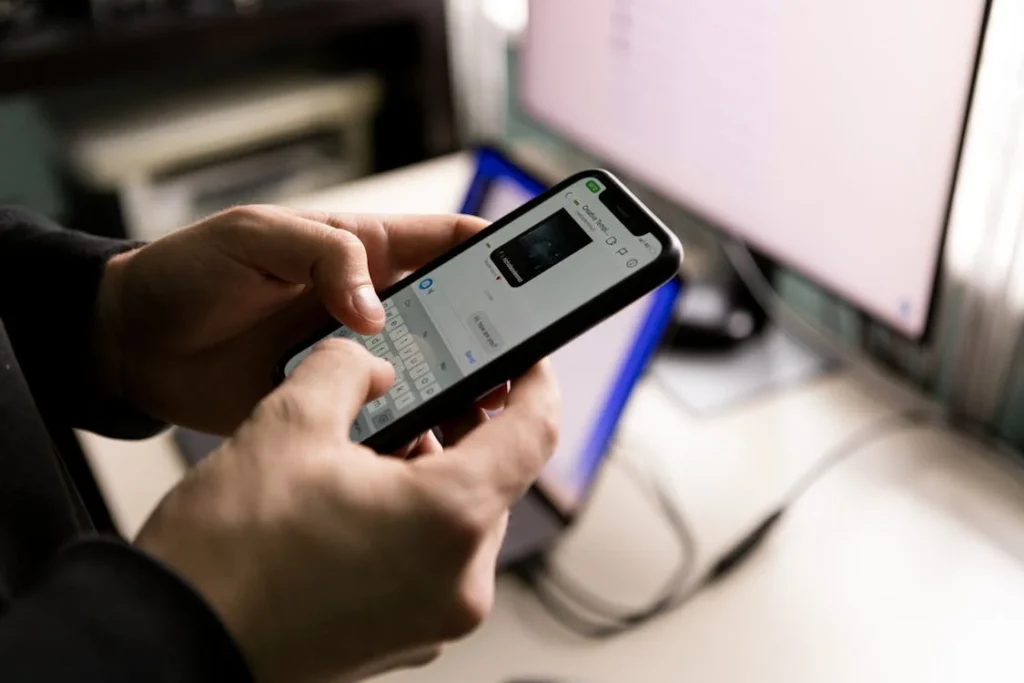
Accessibility in Social Media and Online Communication
Smartphones are not just tools for personal use; they are essential for staying connected with friends, family, and the world.
Social media platforms and communication apps are becoming more accessible, ensuring that people with disabilities can interact online without barriers.
Companies are now incorporating AI-driven accessibility features to improve the user experience for everyone, regardless of their abilities.
Accessible Social Media Platforms
Social media plays a crucial role in modern life, allowing people to share experiences, express themselves, and engage with communities. Platforms like Facebook, Instagram, Twitter, and TikTok have introduced features to make their apps more inclusive.
Screen reader compatibility has been a major focus for social media developers. Facebook and Instagram, for example, offer automatic alt-text for images, which uses AI to describe photos for visually impaired users.
This feature allows individuals using screen readers to understand what’s being shared, even if the original post lacks a description.
Twitter has also taken steps to improve accessibility by allowing users to add custom alt-text descriptions to images.
Meanwhile, TikTok has introduced auto-captioning features, ensuring that videos are accessible to people who are deaf or hard of hearing. These captions allow users to follow along with content without relying on audio.
AI-Powered Communication Tools
For people with speech impairments or cognitive disabilities, traditional messaging and social media interaction can be challenging. However, AI-driven communication tools are making online conversations more accessible.
Voice-to-text technology enables users to dictate messages instead of typing them manually.
Apps like Google Assistant and Apple’s Siri allow users to compose and send messages hands-free, making communication faster and easier.
Predictive text and AI-powered grammar correction tools also help individuals with learning disabilities by refining their written communication.
For individuals with severe speech impairments, augmentative and alternative communication (AAC) apps like Proloquo2Go provide symbol-based communication options.
These apps allow users to select icons that generate spoken words, enabling them to interact with others through text and speech synthesis.
Video Calling with Accessibility Features
Video calls are an essential part of both personal and professional communication, and platforms like Zoom, Google Meet, and Microsoft Teams have implemented accessibility enhancements.
Real-time captions ensure that people who are deaf or hard of hearing can follow along with meetings and conversations. Sign language interpretation windows are also being integrated into more video conferencing apps, making group discussions more inclusive.
Some apps now support AI-driven facial expression and gesture recognition, allowing users to convey emotions and responses without speaking. This is particularly helpful for individuals with speech or cognitive disabilities who may rely on nonverbal communication.
Safe and Inclusive Online Spaces
Ensuring online accessibility is not just about features—it’s also about creating an inclusive and safe environment. Many social media platforms now offer enhanced moderation tools to protect users from harassment and discrimination.
AI-powered filters help detect and remove offensive content, ensuring that people with disabilities can participate in online communities without facing undue barriers.
Inclusive design in social media and communication apps is about more than just convenience; it’s about making sure that everyone can participate in the digital world on equal terms.
As technology continues to evolve, these platforms will become even more accessible, helping people with disabilities stay connected, informed, and engaged.
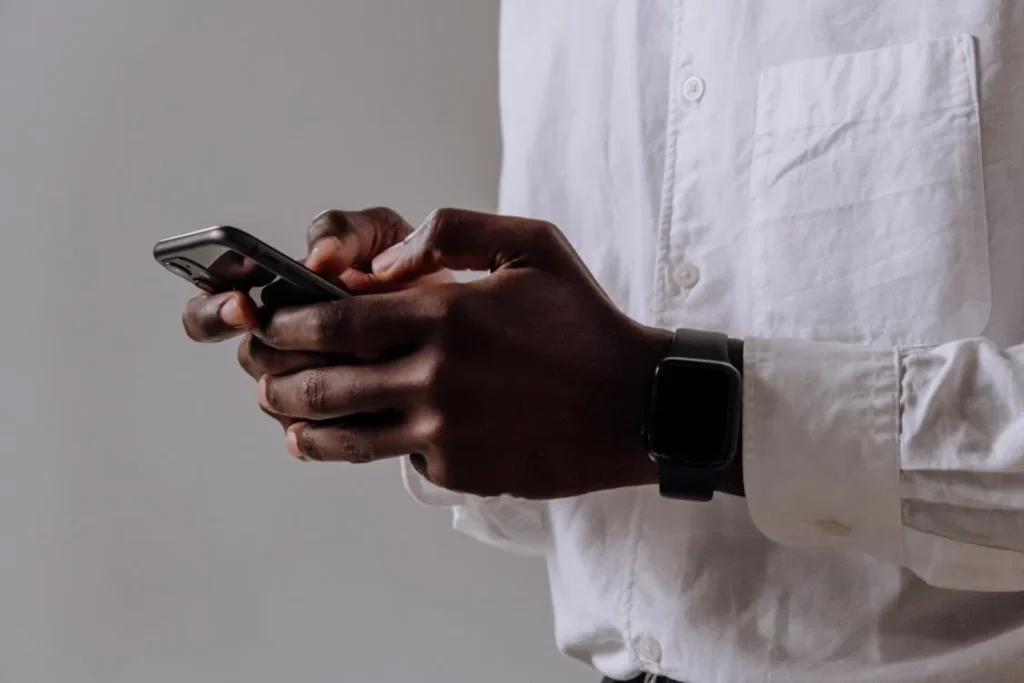
Gaming and Entertainment Accessibility
Entertainment is a fundamental part of life, and smartphones have made it easier than ever for people with disabilities to enjoy gaming, music, movies, and books.
Companies are now prioritizing accessibility in digital entertainment, ensuring that everyone, regardless of ability, can engage with content seamlessly.
From adaptive gaming features to AI-powered audio descriptions, smartphones are transforming the way people with disabilities experience entertainment.
Mobile Gaming for Everyone
Gaming has traditionally been difficult for people with physical disabilities, but smartphone developers and game studios are now making their apps more inclusive.
Many mobile games offer customizable controls, allowing players to adjust touch sensitivity, use one-handed mode, or remap buttons to suit their needs.
Voice-controlled gaming is another major breakthrough. AI-driven technology allows users to play games using voice commands instead of physical controls.
For individuals with mobility impairments, this provides a way to experience gaming without relying on fine motor skills. Some games even integrate eye-tracking, allowing players to control actions just by looking at different areas of the screen.
For visually impaired gamers, apps like Audio Game Hub offer a collection of games designed entirely around sound and voice feedback.
These games use 3D spatial audio, allowing players to navigate and interact based on sound cues rather than visual elements. This innovation ensures that gaming remains accessible, regardless of visual ability.
Accessible Music and Audio Content
Music streaming services like Spotify, Apple Music, and YouTube Music are making their apps more user-friendly by offering voice search, large text options, and AI-powered recommendations.
Voice commands allow users to search for songs, adjust volume, and create playlists without needing to navigate menus manually.
For people who are deaf or hard of hearing, apps like Sound Amplifier and Petralex enhance audio clarity, making it easier to enjoy music and podcasts.
These apps use AI to adjust sound frequencies in real time, ensuring that users receive an optimized listening experience based on their hearing abilities.
Sign language interpretation is also becoming more integrated into digital content. Some music streaming platforms now provide visual lyrics and sign language translation for popular songs, allowing more users to engage with their favorite music in ways that suit their needs.
Movies and TV with Accessibility Features
Watching movies and TV shows is a major part of entertainment, and streaming platforms have stepped up their accessibility efforts. Netflix, Amazon Prime Video, and Disney+ now offer extensive closed-captioning and audio description options.
These features ensure that users who are deaf, hard of hearing, blind, or visually impaired can fully enjoy their content.
Audio descriptions provide spoken narration of visual elements in movies and shows, ensuring that visually impaired users can follow the action.
Many modern smartphones now allow users to set audio descriptions as the default setting, so they never have to manually enable them for each program.
Smartphones also support apps that make entertainment more accessible. GalaPro, for example, provides real-time captions and translations for live theater performances. This allows individuals with hearing impairments to enjoy plays and musicals with ease.
Accessible Reading and E-Books
For individuals who struggle with traditional print, e-books and audiobooks have become essential tools for education and entertainment.
Apps like Kindle, Apple Books, and Google Play Books offer text-to-speech functionality, allowing users to have books read aloud to them.
Adjustable fonts, contrast settings, and dyslexia-friendly typefaces make reading more accessible for people with vision impairments and learning disabilities.
Braille display compatibility is also improving. Many modern smartphones support refreshable braille displays, allowing visually impaired readers to experience digital books through touch.
AI-powered reading assistants can summarize books, translate text, and even provide voice-controlled bookmarking for easier navigation.
By making entertainment accessible, technology is ensuring that people with disabilities can enjoy the same experiences as everyone else. Whether it’s gaming, music, movies, or books, smartphones are breaking down barriers and creating a world where inclusion is the norm.
Conclusion
Smartphones are no longer just communication tools—they are powerful accessibility devices that enhance independence, inclusion, and quality of life for people with disabilities. With built-in features like voice controls, screen readers, and AI-driven assistance, modern smartphones ensure that users can navigate, communicate, and engage with the digital world effortlessly.
The right apps make these devices even more valuable. From real-time transcription and object recognition to hands-free control and accessible entertainment, technology is breaking down barriers in ways that were once unimaginable. As AI, augmented reality, and wearable technology continue to evolve, the future of smartphone accessibility looks even more promising.
True accessibility is about more than just features—it’s about designing technology that works for everyone. As companies invest more in inclusive innovation, smartphones will continue to empower individuals with disabilities, making everyday life more seamless, independent, and connected.
At Robobionics, we believe that technology should be an enabler, not a limitation. By embracing accessibility, we are moving toward a world where everyone, regardless of ability, can experience the full potential of digital technology.



